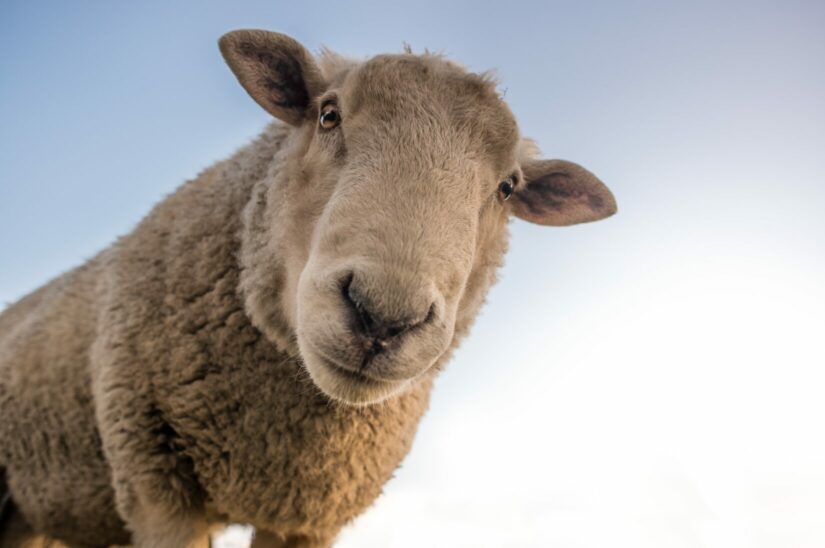In Canada, sheep production is a relatively small industry compared to that of cattle or chicken with just over one million sheep and lambs raised across the country annually. There are over 8,000 sheep farms across Canada. The most popular breeds in Canada are the Suffolk, Dorset and Rideau Arcott.

Life of a farmed sheep
Sheep are raised for meat, milk and wool, depending on their breed.
In meat production, female sheep, called ewes, are mated and approximately five months later give birth to lambs. Ewes nurse their lambs for about 60 days, until the lambs reach between 27 and 32 kilograms and are ready to be weaned. Lambs will continue to grow and will be slaughtered at different times depending on the meat required, but are typically sold for slaughter before six months of age.
In milk production, lambs are removed from the ewe within 48 to 60 hours after birth and raised on sheep milk replacer. The ewes are milked in dairy facilities similar to dairy cattle. Ewes can produce two litres of milk per day and weigh between 70 and 125 kilograms.

Welfare issues for farmed sheep
Lameness (inability to walk properly)
Lameness results in pain and suffering experienced by the sheep. They have difficulty moving and may be unable to access food and water as easily. Foot rot and scald are two common causes of lameness in sheep. Both come from a bacterial infection called bacterium Dichelobacter nodosus. Foot rot and scald are preventable by keeping feet dry, trimmed, and medicating as needed.
Painful procedures
Sheep are routinely subject to tail docking, castration and ear tagging on Canadian farms, all of which cause pain and distress. Pain control is not required for ear tagging, and not all methods of castration required pain management.
Like some breeds of dogs who are tail-docked, farmers will shorten the tails of their sheep to prevent buildup of feces on the tail and surrounding wool. When damp and dirty, this area on a woolly sheep can attract blowflies. The blowflies lay eggs on the sheep and the hatching maggots feed off the sheep’s flesh. It is a very painful and potentially fatal condition. Tail docking makes sheep more resistant to blowfly strike, but hair-breed sheep do not need their tail docked as they do not have the same health concern. Tail docking can be very stressful and painful to the animal if done without using pain medication, which is not a requirement for all methods.
Handling
Sheep are prey animals and can be scared, stressed or injured easily when handled. It is important for caretakers to understand and utilize safe handling techniques.
On-farm euthanasia methods
A sheep farmer may be required to euthanize sheep on farm to prevent or avoid suffering (when treatment or transport for slaughter is not an option). It is critical that the methods used result in immediate loss of consciousness and are properly executed to ensure sheep are not suffering.
Support a better life for farmed sheep
By choosing higher-welfare food products, you can help sheep lead better lives and support the farmers who care for them. Learn more about shopping for higher-welfare food.
We are always working to build a better future for farm animals in B.C. and across Canada, but we need your help. Help us speak for farm animals animals by taking action.

Additional resources:
Subscribe to FarmSense
Are you passionate about farm animal welfare and want to help improve the lives of sheep? Use this form to sign up for our FarmSense e-newsletter and stay up-to-date on our initiatives!
